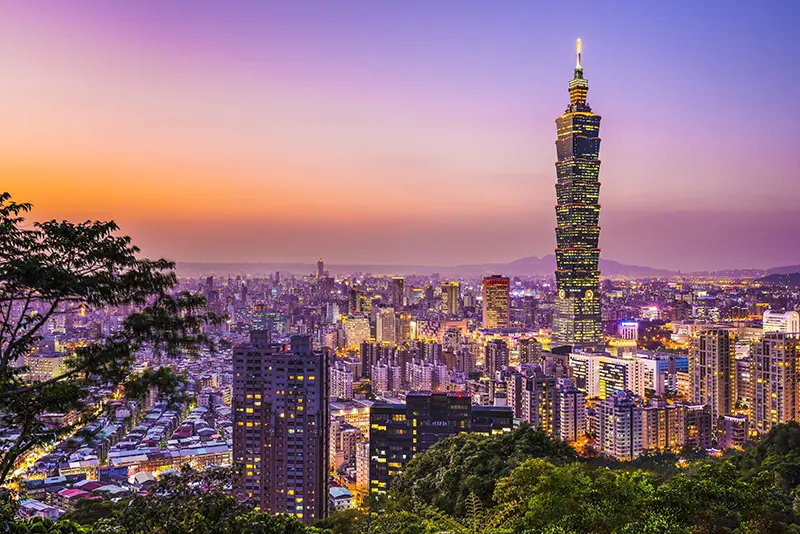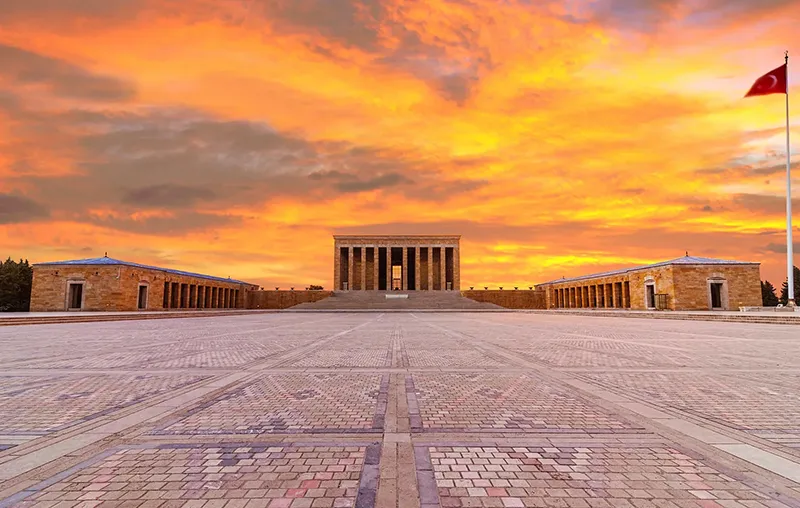The South China Sea is a part of the Pacific Ocean between China, Vietnam, the Philippines, Malaysia, and Indonesia. It is one of the largest seas in the world and is of strategic importance to the Asia-Pacific region.
The South China Sea is subject to territorial claims of several countries. China claims the vast majority of this sea and pursues an active policy to strengthen its position. China is building artificial islands and military bases in disputed territories in the sea, causing tension in the region and leading to disputes with other claimants of these waters.
The South China Sea is home to rich natural resources such as fish, oil, gas and minerals. It is also an important trading route through which much of the world’s maritime traffic passes.
International organizations, including the Association of Southeast Asian Nations (ASEAN), and a number of countries have raised concerns about tensions in the region and called for peaceful resolution of disputes.
Geography
Numerous islands and mainland lands of East and Southeast Asia share the waters of a single South China Sea basin and a common geological past. In the Precambrian Period (more than 500 million years ago) the Chinese platform forming the northern part of Asia was a huge land mass. Then it split and the South China Plate filled with water where its southern part collapsed. This is how local seas were formed, including the South China Sea, whose basin is delineated by the coastline of China, Vietnam, Cambodia, Thailand, Singapore, Malaysia, Brunei, and the Philippines, as well as the chain islands (Taiwan, Luzon, and others) that separates the Asian continental shelf from the so-called Pacific Trench. The sea is known for its depth variations. Its western and southern parts rest on the Sunda Shelf (a broad continental shoal), where the bottom often starts at 30-80 m (at the edge – more than 150 m). In the northeast, from the Philippines and Sulawesi, as well as from the Lesser Sunda Islands, the shelf is separated by a huge basin (in some places up to 4000 m), with a maximum depth of 5560 m. In contrast to the eastern part, where undercurrents are weak, the western part has a pronounced southward current in winter and northward – in summer. At a depth of more than 2,000 m, the temperature holds at 2.3° C and salinity reaches 34.63%. The diurnal and semidiurnal tides are capable of reaching 5.9 m.
History
The first Europeans to settle here were probably the Portuguese, who in 1553 won the right to anchorage and sea trade off the Macao Peninsula, breaking the ban on it that had existed in Imperial China since the 14th century. Perhaps the sea was known to Fernand Magellan (1480-1521) as early as 1520, when he rounded South America and sailed the calm waters of the ocean to the Philippine Islands. He christened the ocean he had traversed the Pacific and apparently reached the South China Sea. In any case, a detailed map of the Pacific Ocean published by the Flemish cartographer Abraham Ortelius (1527-98) in 1589 already showed this sea. As time passed, Macau became a Portuguese colony, and Europeans increasingly appeared in the waters of the South China Sea, sharing its shoreline lands among themselves.
In the middle of XIX century the South China Sea became the frontline of the “Opium Wars” (1840-1842 and 1856-1860). The conflicts were initiated by Britain and France in order to weaken China. The Europeans won, received a multi-million concession in Chinese currency, and reached agreements which improved the position of foreigners in the region and increased the turnover of trade. Great Britain lost the southern part of the Julong Peninsula with Hong Kong, “the greatest harbor in the world,” according to James Clavell (1924-1994) in his novel Tai Peng (1966).
In the 20th century, the South China Sea continues to be an area of heightened tension due to its strategic location and the presence of minerals in its shelves. In 1939 the islands of the South China Sea were occupied by the Japanese. They established military communications: tracking, pre-detection and warning stations, a seaplane port, a submarine base, and an airstrip. This, in the initial period of World War II, enabled the Japanese to significantly undermine Allied forces. The Europeans also tried to strengthen their position. In particular, great importance was given to military strengthening of Indochina by France, which was engaged in extensive military construction in its colonies (for example, since 1939 an aviation plant operated in Hanoi), had an extensive garrison and a naval base. But already in 1940 it was forced to submit to Japan’s demand to stop shipping cargoes to China through Indochina. Against Japan itself in the sea a number of successful operations were carried out by the American and British Allied Forces in 1945. Of particular interest has always been the strategically important Spratly Islands, located between Vietnam, the Philippines and Malaysia: to this archipelago of more than 100 small islands is still claimed by six states (Vietnam, China, Taiwan. Malaysia, the Philippines and Brunei). Deep-water studies give reason to speak about the presence of about 3,100,000,000 tons of oil in the depths of the sea. One of the major oil and gas-bearing areas is the Sunda Shelf. Before our eyes, the territorial conflict between China and the Philippines in the South China Sea threatens to escalate.
But any conflict in this region threatens to go beyond the local, since the main sea route connecting Asia (including China and Russia) with Australia and Africa runs here.
Tourism
A major part of the coastal countries’ income comes from tourism. Visitors can relax on islands of coral and volcanic nature. Some of the volcanoes are active, so underwater eruptions and tsunami-generating earthquakes are not uncommon here. This, combined with frequent typhoons and monsoon drift currents, makes the region dangerous for sailors.
Some are frightened by this sea, others are patronized by the semi-mythical figure of Madame Wong. Her husband, Mr. Wong Kungkit, made a huge fortune robbing ships in the South China Sea. After his death in 1947, his wife took over his business. She managed to organize a pirate gang in the best traditions of Chinese secret societies, the head of which was sacred and implied mystical unquestioning obedience.
The exotic fauna of these places is no less striking than the exciting legends: strong and aggressive striped gymnomes, poisonous stonefish warthogs, Chinese flutatorrils, whistle fish and sea urchins hiding in needles crookedtails.
General Information
- Sea in the western Pacific Ocean. It washes the coastline of East and Southeast Asia.
- The largest peninsulas: Indochina, Malacca.
- Location between islands: Kalimantan (Borneo), Palawan, Luzon, Taiwan.
- The main straits are Taiwan Strait, Vashi Strait, Luzon Strait, Singapore Strait, Gelasa Strait, Karimata Strait.
- Large bays: Bakbo (Tonkin), Gulf of Thailand.
- Largest island: Hainan.
- Largest inflowing rivers: Xijiang (South China), Hongkha (Vietnam), Mekong (Vietnam), Chao Praya (Thailand), Menam (Thailand).
- Countries with access to the sea: China, the Philippines, Vietnam, Cambodia, Thailand, Malaysia, Taiwan, Singapore, Brunei and Indonesia.
- Important ports and major cities: Kaohsiung (Taiwan), Hong Kong (China), Zhangjiang (China), Hanoi and Ho Chi Minh City (Vietnam), Bangkok (Thailand), Singapore (Republic of Singapore), Manila (Philippines).
- Major airports: Singapore International Airport (Changi), Kota-Baru Airport, Hong Kong International Airport (Chek Lap Kok) and Bangkok International Airport (Suvarnabhum).
- Area: 3,537 km2.
- Average depth: 1024 m.
- Greatest depth: 5560 m.
- Water volume: 3,622 km3.
- Current velocity: about 1 km/h.
- Salinity: from 31%-33% (in summer) to 31.5%-34% (in winter).
- Total water area: over 3,530,000 km2.
Economy
- Industries: light industry, food industry, oil and gas production, electronics assembly.
- Agriculture: plant growing, vegetable growing, fishery, animal husbandry.
- Services sphere: tourism, trade, transport.
Climate and weather
- Tropical, equatorial monsoon in the south.
- Average temperature in January: +15°C (in the north) and +25°C (in the south).
- The average temperature in July is +28°C.
- Average annual rainfall: 2000-2500 mm a year.
- Average temperature of water (on a surface): in winter from +20 ºС (in the North) up to +27 ºС (in the South); in summer up to +29 ºС.
- Typhoons are very frequent (in summer and autumn).
- Wind zones: northeast (in winter), south and southwest (in summer).
Attractions
- Con Dao National Park (Vietnam)
- Rim and Botum Sakor National Park (Cambodia)
- Bako and Similajau National Park (Kalimantan Island (Borneo), Malaysia)
- Puerto Princesa Underground River National Park (Philippines)
- My-Ko-Ang-Thong National Marine Park (Thailand)
- Similajau National Marine Park (Malaysia)
Fun Facts
- From the bottom of the South China Sea in 1934, the largest (over 6 kg 14×24 cm) and most expensive (about $42 million) pearl in the world was recovered – the “Head of Allah”. It does resemble in shape the head of a man in a turban and, like any unique natural formation, over the centuries of life at the bottom of the sea has become covered not only with a layer of nacre, but also with legends. It is said that Lao Tsei himself, the luminary of ancient Chinese philosophy, put an amulet in the shell, and then his followers transferred the pearl to the bigger and bigger mollusk. According to a sad legend typical for the countries with the developed pearl trade, the son of one of the Philippine chiefs found it. At that moment the pearl was inside a gigantic tridacna shell, which he failed to get hold of and died. Tridacnas can indeed reach a length of 2 m and weigh more than 100 kg Tridacnas have traditionally been considered dangerous to pearl fishers, for which they were nicknamed “death traps.
- Since 1974, the South China Sea is blessed with the likeness of the famous Brazilian sculpture of Jesus with outstretched arms – Thanh Loc (Vung Tau, Vietnam).
- At the foot and on the slopes of Mount Kinabalu (Kalimantan Island (Borneo), Malaysia) there are many amazing plants. Among them are more than a thousand species of orchids. Many of their varieties are local endemics. Since the XIX century, this “queen of flowers” was valued by English gardeners by weight of gold, exported to the continent and sold at auctions. Here is also the habitat of the “cadaver lily” – a stinking smell and beautiful looking parasitic Arnold’s Rafflesia, which has no roots or stems but blooms with the largest (up to 1 m in diameter when open) flowers in the world, weighing up to 6 kg.
- Underground river national park Puerto Princesa on the island of Palawan (Philippines) is famous for the longest (8.2 km) navigable underground river in the world. It created grottos and caves up to 60 m high and 120 m wide in the limestone mountain massif. For this, it was listed as a UNESCO World Heritage Site.




